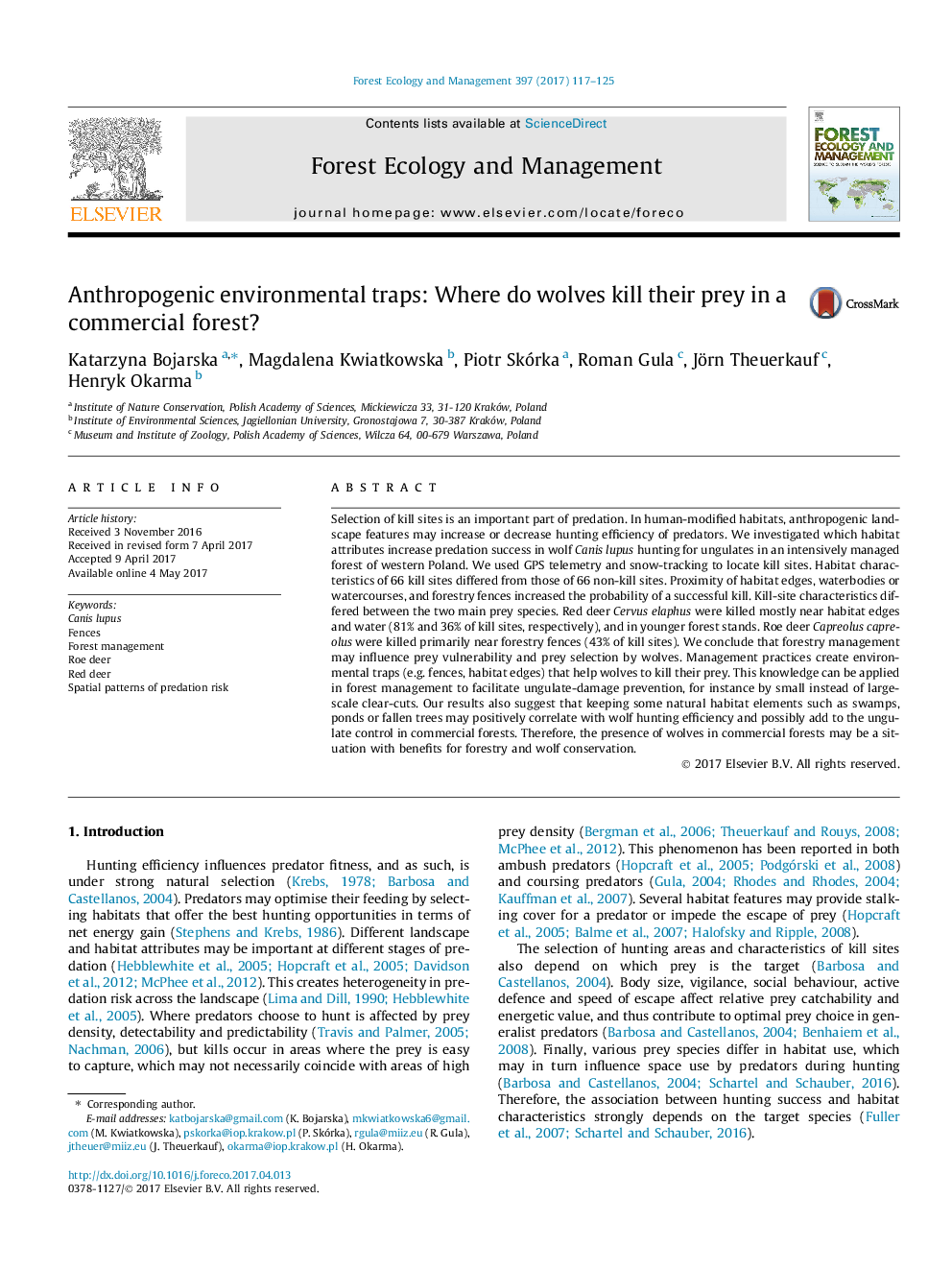| کد مقاله | کد نشریه | سال انتشار | مقاله انگلیسی | نسخه تمام متن |
|---|---|---|---|---|
| 6459357 | 1421361 | 2017 | 9 صفحه PDF | دانلود رایگان |
Selection of kill sites is an important part of predation. In human-modified habitats, anthropogenic landscape features may increase or decrease hunting efficiency of predators. We investigated which habitat attributes increase predation success in wolf Canis lupus hunting for ungulates in an intensively managed forest of western Poland. We used GPS telemetry and snow-tracking to locate kill sites. Habitat characteristics of 66 kill sites differed from those of 66 non-kill sites. Proximity of habitat edges, waterbodies or watercourses, and forestry fences increased the probability of a successful kill. Kill-site characteristics differed between the two main prey species. Red deer Cervus elaphus were killed mostly near habitat edges and water (81% and 36% of kill sites, respectively), and in younger forest stands. Roe deer Capreolus capreolus were killed primarily near forestry fences (43% of kill sites). We conclude that forestry management may influence prey vulnerability and prey selection by wolves. Management practices create environmental traps (e.g. fences, habitat edges) that help wolves to kill their prey. This knowledge can be applied in forest management to facilitate ungulate-damage prevention, for instance by small instead of large-scale clear-cuts. Our results also suggest that keeping some natural habitat elements such as swamps, ponds or fallen trees may positively correlate with wolf hunting efficiency and possibly add to the ungulate control in commercial forests. Therefore, the presence of wolves in commercial forests may be a situation with benefits for forestry and wolf conservation.
Journal: Forest Ecology and Management - Volume 397, 1 August 2017, Pages 117-125
